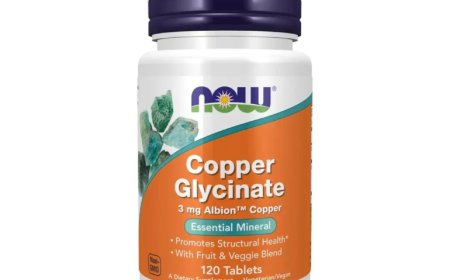Cashew Nut Processing and Manufacturing - Explained!

To understand how you get to the ivory cashew kernel that you love, you must first understand cashew nut processing- where it originates from and what it goes through before being edible. Cashew is a tropical shrub that grows in India, Brazil, Vietnam, Indonesia, the Ivory Coast, Benin, Ghana, and other tropical nations. The origin or source of the cashew also influences cashew processing, as raw cashew nut sizes vary by area. The size, taste, texture, and color of cashew kernels are also affected by their origin.
How Is Cashew Nut Made?
The cashew tree is a seasonal tree that only produces fruit once a year. During the season, the tree begins to blossom and subsequently produces the drupe or cashew seed. What is known as the cashew apple begins to develop around it. As harvest season approaches, the luscious fruit develops fully. The yellow and red cashew apple is an accessory or pseudo fruit; the genuine fruit of the tree is the kidney-shaped grey-ish seed emerging from the fruit, containing the cashew kernel. Raw cashew nuts are collected after the apple falls from the tree, ensuring that the seed is completely developed.
The raw cashew nut is difficult to crack due to its hard outer shell and multiple layers of protection. It also contains anacardic acid, an allergenic resin that can cause skin irritation. Cashew processing techniques are used to open the nut to protect the individual and extract cardanol oil as a byproduct.
After shelling, the cashew is coated in a pinkish-brown skin or peel called testa [also known as the cashew husk]. This is yet further layer of protection for the kernel. This testa must be removed using either machines or a mix of machinery and physical work. The testa that cannot be removed by machines is removed by hand by expert laborers using small knives.
This was a quick introduction to the cashew nut. The overall cashew process is significantly more complex.
The Various Stages Of Cashew Processing And Manufacturing
Procurement
The cashew processing industry starts with the procurement step. Given the seasonal nature of cashews, this is a vital step for any maker. Cashew season varies from location to region. In India, the season runs from March to May. Farmers deliver their daily harvest to a collecting center in their neighborhood. Their organic raw cashew nut production is weighed, labeled, and kept. It is then delivered to production facilities for the next step in cashew processing.
Drying
Raw cashew nuts must be dried before they may be processed further. Drying is a key stage that affects the result of the cashew kernel. It must be completed in the weeks following harvest and then stored. Depending on the volume of raw nuts needed for processing throughout the year, it is a labor-intensive operation that needs vast yards, physical labor, and a good amount of sunlight. Unseasonal rainfall might disrupt this process.
Shelling
The roasted raw cashew nuts are then sent to the shelling section for the next step in cashew processing. Machines are used to crack open the outer shell and extract the kernel. Skilled work is required to guarantee that the kernel is not damaged. This step of cashew processing in India has received unwanted attention as a result of the previously stated anacardic acid coming into touch with workers' hands.
Peeling
After the raw cashew nuts are shelled, we find the testa-covered kernel within, also known as 'natural wholes' or NW. In India, roasted natural wholes are also considered a delicacy. The roasted NW will have brittle testa that can be readily removed by hand before eating the kernel. However, most cashews continue to the next stage, which is peeling. The peeling procedure for cashews involves numerous processes to guarantee that the nuts are free of testa without damaging the cashew kernels. Whole cashew kernels are the most sought-after, thus care must be taken to guarantee as little shattering and resultant fragments as possible. Cashew bits are also used in a variety of ways, most notably as ingredients in Indian cuisine. The testa, sometimes known as the husk, is an industrial waste.
Grading
Once peeled, cashews are edible. However, this is where the cashew process becomes more intriguing. Cashews are graded according to a variety of features. Cashews are sorted into whole and broken bits. The bits and whole cashews are assessed individually.
Whole cashew nuts are evaluated depending on their size, finish, and color. Because of the peculiar kidney shape of the cashew, size is determined by count. Counts represent the number of cashews per pound. The greatest grade offered is 150 count. Our XXXL cashews are 150 in size and count. This cashew nut grade is rare and highly valued.
The remaining grades are 180 (XXL), 210 (XL), 240 (L), and 320 (M). These are the most popular cashew nut grades, however the market has the maximum availability in the 240s and 320s.
Inspection
Cashews must be kept carefully since they are both a food and a natural product. Before being packed and kept, graded cashew nuts undergo multiple kill procedures to guarantee that no microbiological infections occur. They are also examined for foreign material. After a thorough inspection, they are boxed and kept.
Storage and Packaging
The final step in cashew processing is packing and storage. Cashews are vacuum-packed in nitrogen-flushed poly pouches. This keeps the cashews fresh and eliminates the chance of infection.
And That is How You Get Cashews!
It takes 6 to 10 days for the raw cashew nut to complete this full cycle before it is ready for packing and shipping. This is why cashew production occurs in predetermined cycles. Cashews have an excellent shelf life of up to nine months. The cashew production process is complex, with many tiny phases inside bigger operations. We hope you've gained an understanding of how your cashews are processed.
What's Your Reaction?


















